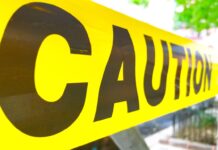There is a new framework from the Province of Ontario for COVID-19 response. It was designed by the province alongside health experts and the chief medical officer of health. The framework is called “Keeping Ontario Safe and Open” and it outlines five new classifications of COVID-19 restrictions.
Premier Doug Ford said earlier this week, “It’s clear COVID-19 will be with us for a while, which is why we are putting in place a framework that will protect the health and safety of individuals and families, while avoiding broader closures across the province.”
The first level is “Prevent” (indicated by the colour green), followed by “Protect” (indicated by the colour yellow). The third is called “Restrict” (indicated by the colour orange), the fourth is called “Control” (indicated by the colour red). The final stage is lockdown (no colour association).
Each stage explained
Prevent (Green)
In the “Prevent” category, the region will look most at awareness and education about important public health safety measures. Restrictions will be like those of the former Stage 3, until there is a widely available vaccine or treatment. High-risk settings will still remain closed.
To be in the green status, the health unit’s weekly incidence rate must be fewer than 10 cases per 100,000 people and the test positivity rate must be under one per cent.
Protect (Yellow)
In the “Protect” category, the region’s focus will be enhanced, targeted enforcement. This includes fines and education to limit higher rates of transmission.
There will be extra public health measures required in high-risk settings, such as restaurants, movie theatres and gyms.
Regions that are assigned the yellow category must have a weekly incidence rate between 10 and 39.9 cases per 100,000 people. The area’s test positivity rate must be between one and 2.5 per cent.
Restrict (Orange)
When the “Restrict” category is assigned to a region, there will be enhanced measures and restrictions applied to slow the spread of COVID. This phase might be compared to the previous Stage 2.
These regions must have a weekly incidence rate between 40 and 99.9 cases per 100,000 people. The test positivity rate must be between 2.5 and 9.9 per cent.
It should be noted that if a region is at this level, it also means hospital and ICU occupancy are increasing.
Control (Red)
If it is in the “Control” phase, a region would implement much broader measures and restrictions across multiple sectors.
The restrictions in te red phase are the most strict before moving into a lockdown.
The weekly incident rate for this category is more than 100 cases per 100,000 people and the positivity rate must increase above 10 per cent.
Hospital and ICU beds are at risk of being overwhelmed.
Lockdown (Strictest Measures)
If, even after measures from the previous level are implemented, things continue to worsen, a region would move to a full lockdown. This means closing all non-essential businesses and going right back to to Stage 1 or pre-Stage 1.
What’s next for Peel?
The Region of Peel, along with York Region and Ottawa, are moving from a modified version of Stage 2 to the new Restrict/Orange level. According to the Ontario government, this begins on Saturday, November 7.
The framework allows for gyms, indoor dining, bars and casinos can open with only a limited capacity for indoor service.
- Restaurants and bars must cap their numbers at 50 people, end alcohol service by 9 p.m. and close by 10 p.m.
- Gyms are allowed to have a maximum of 50 people at once and people will be limited to a visit of only one hour.
- Movie theatres are also allowed to reopen with a capacity of 50.
- Planned outdoor public gatherings will be limited to a capacity of 100 people.
- Private gatherings will be limited to 10 people indoors or 25 people outdoors.
Durham, Halton and Hamilton are staying in the Protect/Yellow level and all other regions will be moved to the Prevent/Green level. There are no regions in the control or lockdown levels as of this writing.
Learn more on the provincial website here.















